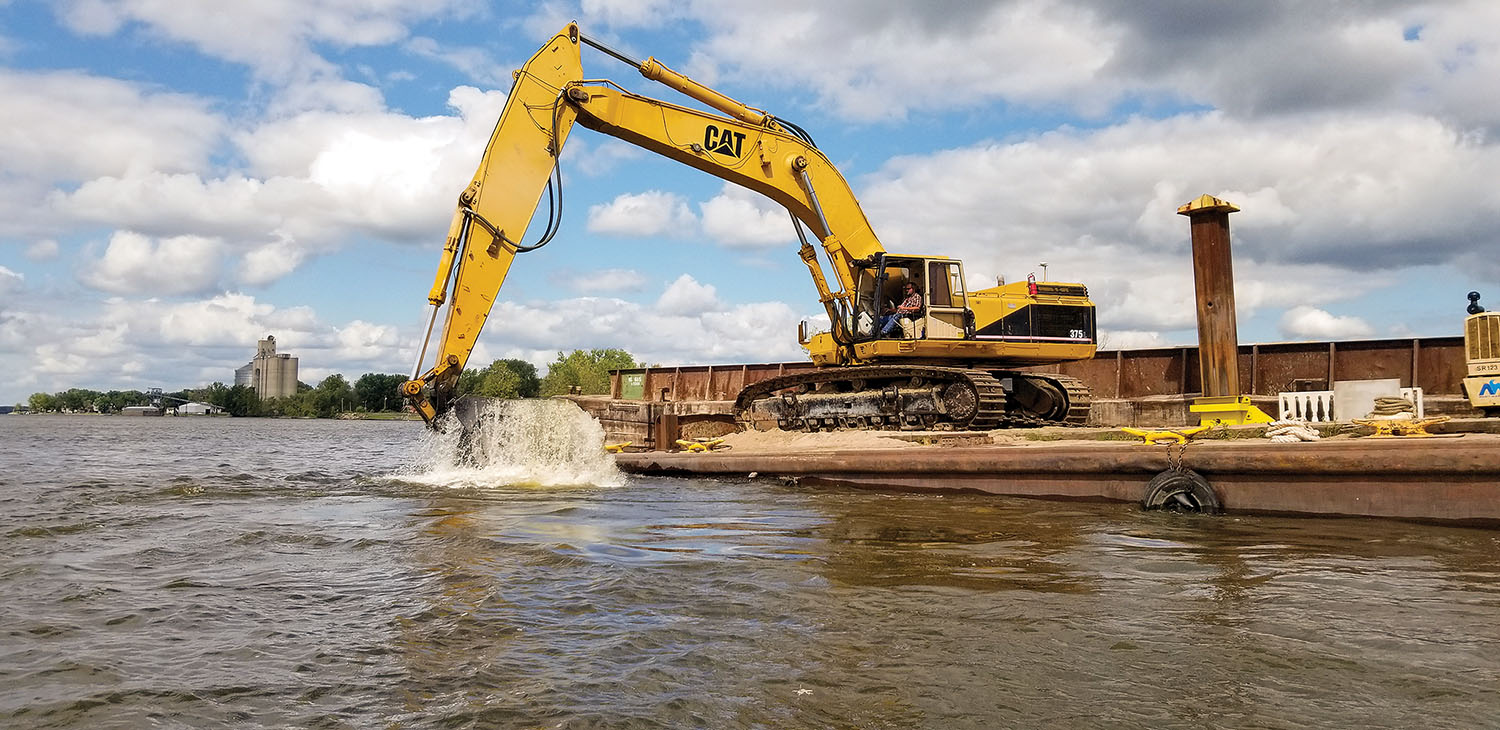A couple of short weeks ago, the Rock Island Engineer District was struggling to perform dredging to clear riverbends and shoals from the huge deposits of silt left by this year’s record floods.
The district had to borrow dredges from the St. Louis and St. Paul districts to keep potential choke points open for barge tows. Extra dredging funds promised as part of an almost billion-dollar flood relief package signed by President Trump in June were not forthcoming, and no one seemed to know when they would be released.
But several waves of rainstorms over the past couple of weeks have raised river levels, helping to clear traffic—but also threatening new high-water closures.
Ton Heinold, chief of operations for the Rock Island District, said the river has risen more than 12 feet in the past two weeks—4 feet in one 24-hour period alone. Over the weekend from September 20 through September 23, it “rained all weekend over a widespread area, enough to completely saturate the ground and cause a lot of runoff,” he said.
The rain and rising water have helped to relieve traffic pressure on one silted-in bend where barge traffic has been restricted to one-way movement.
In fact, one or two of the district’s dredges may not be able to spud down. Heinold said the dredge Goetz will continue to work.
As this issue goes to press, more rain is forecast for the weekend beginning September 26. The river is already above flood stage, said Heinold; Locks 16 and 17 are “only a few feet away from closure.”
“It’s been a wild ride,” said Heinold.
He noted that his district has become much more flood resilient.
“On the locks and dams, we’ve moved electrical components higher, so they won’t get flooded,” he said.
Heinold was the project leader 10 years ago on a floodwall project that now protects the main drinking-water plant for the Quad Cities. “The waters this year went higher than in 1993, and at no point was the drinking water-supply for 300,000 people under threat,” he said.
There is still no word on when the extra dredging money will be released—but for now, the rains have provided a dredging reprieve.



